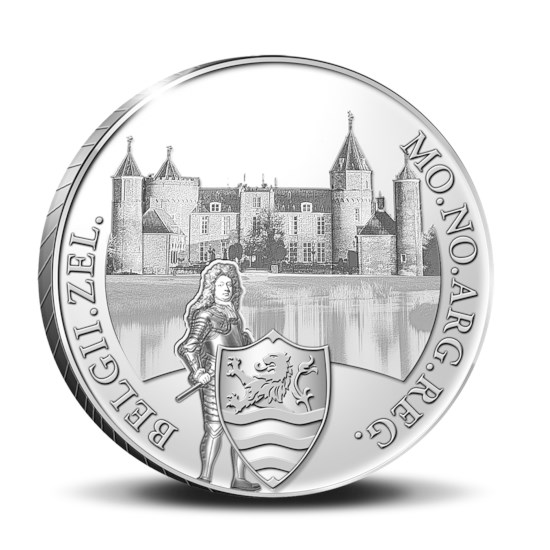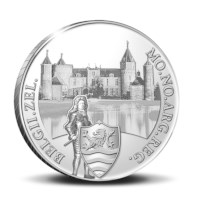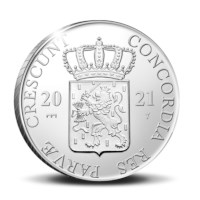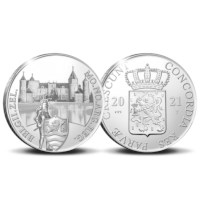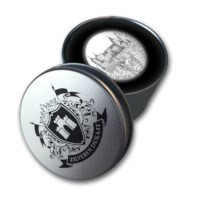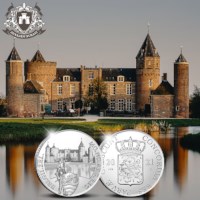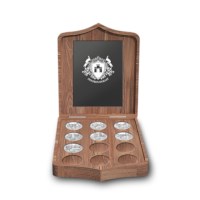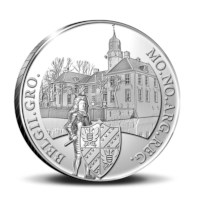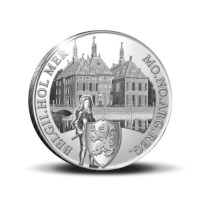Silver Ducat “Westhove Castle” 2021
- Dive into the history of Westhove Castle!
- Commissioned by the Ministry of Finance
- With knight Godard de Ginkell (1644 –1703)
- Packaging inspired by the knight’s armour
- With Certificate of Authenticity
Silver Ducats are commissioned by the Dutch Ministry of Finance and are collector coins. The issue with Westhove Castle is part of the ongoing series “Dutch castles”. Are you also collecting these silver coins?
Part 6: Discover the stately Westhove Castle
Westhove Castle, situated in Oostkapelle, has a turbulent history of many owners and renovations. It is not known exactly when the castle was built, but this must have been sometime before 1300. Around that time the castle was part of the abbey in Middelburg. The abbey was enormously powerful at that time and the castle was a means to maintain that power. Medieval castles were, after all, intended as defensible homes. In the fifteenth century, it was no longer necessary for the castles to be used and the castle was used by the abbots as a summer residence.
In 1559 Middelburg became an episcopal city and thus the bishop owned Westhove. During the Siege of Middelburg in 1572, the castle was occupied by the “Watergeuzen” (Calvinist Dutch noblemen who opposed Spanish rule during the Eighty Years’ War), led by Groningen nobleman Bartholt Entens van Mentheda. He set the castle on fire, destroying much of the original structure. Hereafter, the castle has been in the hands of many private individuals who each left their mark on the castle. Gardens were planted and the castle was expanded with many outbuildings, including an orangery. From 1899 the building was used as a convalescent home for children. Today, the castle and its coach houses function as a youth hostel. The Terra Maris Museum has been housed in the orangery since 2004.
Knight Godard de Ginkell
As written in the Dutch Mint Act, a Silver Ducat must depict a knight in armour with a shield showing the province weapon in front of his left leg. Godard de Ginkell (1644 –1703) puts on the knight’s armour on all Silver Ducats in the series “Dutch Castles”. The historical knight is known in the Netherlands as Godard van Reede, but is named Godard de Ginkell in the United Kingdom thanks to his military earnings there. Discover Godard de Ginkell and other historical knights on our website.
Design
The obverse of the Silver Ducat “Westhove Castle” depicts knight Godard de Ginkell in front of the famous castle. The province weapon of Zeeland can be found on his shield. The inscription on this issue reads: “MO.NO.ARG.REG.BELGII.ZEL.”. “MO.NO.ARG.REG.BELGII.” is the Latin abbreviation for “Moneta Nova Argenta Regni Belgii”: New Silver coin of the Kingdom of the Netherlands. “ZEL.” stands for the province of Zeeland.
On the reverse of the Silver Ducat, the National coat of arms of the Netherlands with the Royal Crown between the numbers of the year can be found. The inscription reads: “CONCORDIA RES PARVAE CRESCUNT”, Unity makes Strength. Here you can also find the mint mark and the acting privy mark including an *.
Are you curious to learn more about the Silver Ducats?
| Article number | 0111741 |
|---|---|
| Metal | Silver |
| Content | 873/1000 |
| Weight | 28.25 g |
| Diameter | 40.0 mm |
| Edge | Cable |
| Quality | Proof |
| Mintage | 2,000 |

